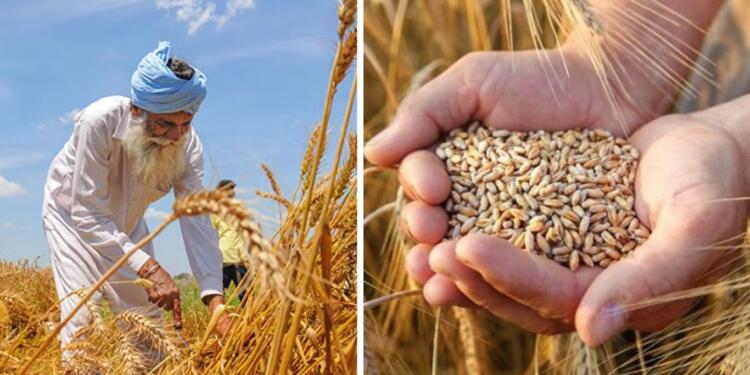India has the potential to become a global food leader by utilizing localized agricultural data through digital technology, AI, and structured governance reforms. This report proposes strategic reforms aimed at empowering farmers, boosting incomes, minimizing waste, and enhancing India’s role in global food diplomacy. Key suggestions include real-time data collection, AI-enabled planning, infrastructure development, and increased accountability to make Indian agriculture sustainable and internationally competitive.
1. India’s Strategic Agricultural Advantage
India is poised to become the world’s food supplier. With over 150 million hectares of arable land, diverse agro-climatic zones, and a supportive scientific and policy environment, the country is well-equipped for global agricultural leadership.
The government’s approach increasingly focuses on sustainable farming, food security, and integrating digital solutions. India’s foreign policy strengthens ties with developing nations by using food, pharmaceutical, and vaccine diplomacy. Its global influence is further amplified by its culture, diaspora, technology, and defense capabilities.
Indian agriculture spans varied terrains, with about 103 million hectares actively farmed. In 2023–24, foodgrain output hit 332 million tonnes, including 137.8 Mt of rice and 113.3 Mt of wheat. Agricultural exports reached $50 billion, emphasizing premium products like basmati rice and processed foods. While rain-fed agriculture dominates, about 39–46% of farming is irrigated, primarily using groundwater. Investment in agricultural R&D is growing, and India aims to double its agricultural exports by 2030.
However, to truly modernize the sector, India must overhaul internal systems, particularly how it gathers and uses agricultural data. Leveraging AI and digital tools for intelligent policymaking will boost yields, enhance infrastructure, and elevate India’s global standing, while ensuring food security and farmer well-being.
2. Ground Reality: The Case for Urgent Reform
Despite agriculture being the primary livelihood for 58% of Indians, it contributes only around 18.3% to the GDP, exposing its inefficiency and untapped potential.
Indian farmers face multiple challenges:
- Low productivity, substandard seeds, and limited mechanization
- Poor earnings—average monthly income is ₹6,426 (NABARD, 2021)
- Market volatility and lack of pricing power
- Inadequate access to credit, insurance, and government services due to digital and literacy gaps
Administrative institutions like Patwaris, Tehsildars, and KVKs have not effectively bridged these gaps, often becoming bottlenecks themselves. Issues such as weak oversight, outdated mandi systems, judicial inefficiencies, and corruption have worsened the crisis. Many farmers remain trapped in debt, cut off from formal finance, and vulnerable to exploitation due to illiteracy.
Unless there is internal reform, India’s aspirations for agricultural dominance cannot be realized.
3. Unlocking Growth through Data-Centric Agriculture
The key to transformation lies in digitizing and analyzing granular, village-level agricultural data. Although Patwaris already collect this data, it remains underutilized due to poor digitization and integration. Once streamlined and validated in real time, this data can drive national planning, improve disaster preparedness, and boost inclusive growth.
A. Domestic Benefits
Increased farmer earnings through precise advisories and reduced input misuse
Infrastructure development guided by accurate cropping patterns
Transparent and efficient delivery of subsidies, credit, and insurance
Real-time responsiveness to weather and pest threats
B. Strategic Global Value
Position India as a dependable partner in global food diplomacy
Enhance India’s reputation as a tech-forward agricultural economy
Strengthen regional partnerships with surplus sharing and technical support
C. Industrial and Job Creation Potential
Foster agro-processing clusters and local value chains
Create employment in logistics, processing, quality control, and packaging
Empower Farmer Producer Organizations (FPOs) and rural enterprises
4. Data and Technology Integration: The Backbone of Reform
Agricultural governance is currently fragmented, manual, and inefficient. For transformation, India must embed digital technology across every level of administration.
A. Core Issues
Farmers are disconnected from relevant data
Government departments operate in silos
Middlemen benefit from the lack of transparency
Data is outdated, inaccurate, and unverifiable
B. Structural Gaps
Revenue departments hold land/crop data
Agriculture departments and KVKs manage farmer advisories
There is little coordination or digitization in field operations
C. Tech-Driven Solutions
Data Collection Tools
Mobile apps for Patwaris to record geo-tagged crop data
Multilingual platforms for farmers to self-report
Satellite imagery and drones for cross-verification
AI and Analytics
Predict harvests, disease outbreaks, and irrigation needs
Recommend crops based on soil, water, and climate data
Forecast market trends and consumer demand
Smart Governance
Allocate inputs based on verified profiles
Optimize storage and disaster relief deployment
Provide GIS dashboards for real-time administrative tracking
5. Policy Overhaul: Building an Enabling Framework
For digital transformation to succeed, policy support must be strong, inclusive, and transparent.
Key Policy Recommendations:
Digital Crop Mapping Act: Mandate real-time digital crop data across the country
Agri Data Governance Authority: Set standards and ensure interdepartmental coordination
Digital Empowerment of Patwaris: Provide tools, training, and performance incentives
FPO Data Rights Bill: Legally empower FPOs to access and use data
Modern Mandi Reforms: Expand e-markets with guaranteed minimum support prices (MSPs)
AI-Enabled Input Distribution: Use AI to determine fertilizer, seed, and pesticide needs
Smart Crop Insurance: Use real-time data to automate claims based on satellite and yield data
6. Implementation Strategy: Multi-Tiered Approach
Transformation must be structured from the ground up, with synchronization at every level.
A. Administrative Structure
Village: Patwaris, KVKs, and farmers as primary data collectors
District/Tehsil: Data aggregation, remote sensing validation
State: Policy updates, disaster planning, infrastructure development
National: Export strategy, trade forecasting, strategic planning
B. Technology Infrastructure
Centralized Agri Data Platform linked to Aadhaar and land records
Customized dashboards for each stakeholder
AI engines for yield forecasting and subsidy allocation
GIS systems for real-time crop and water mapping
C. Training and Support
Digital training for Patwaris and Tehsildars
KVKs as rural tech support centers
Public-private partnerships to build digital tools
D. Community Involvement
Panchayats and FPOs to verify and audit local data
SHGs and rural youth to assist older or digitally excluded farmers
7. Ensuring Accountability: Monitoring and Auditing Tools
To safeguard transparency and data accuracy, a robust oversight system is vital.
Suggested Mechanisms:
Digital Audit Trails: All data edits to be time-stamped with official IDs
Public Dashboards: Village/block-level visual data reports via Gram Panchayats
Independent Reviews: Engage colleges, NGOs, and FPOs for quarterly audits
Incentive-Based Oversight: Link officer promotions to data quality and farmer impact
8. Conclusion: A Data-Driven Future for Indian Agriculture
India’s ambition to become a global agricultural powerhouse is achievable—but only if farmers are empowered not just with tools and subsidies, but also with data, dignity, and decision-making authority.
This report urges swift and comprehensive adoption of digital intelligence in agriculture. Beyond increased yields, the expected benefits include:
Enhanced farmer incomes
Efficient planning and reduced losses
Agro-industrial expansion and rural job growth
Strengthened international food diplomacy
Inclusive, sustainable development of rural India
The time is now. Let the next agricultural revolution be led by data, foresight, and resolve—not just by machinery or fertilizers.































